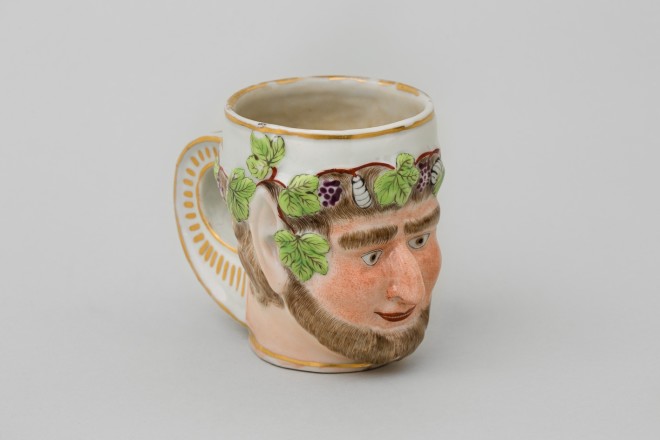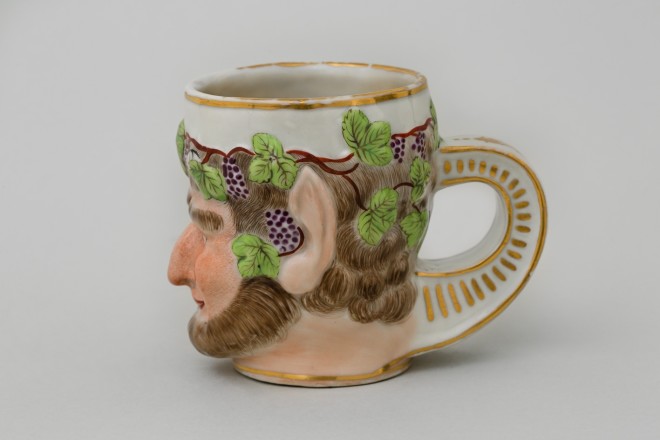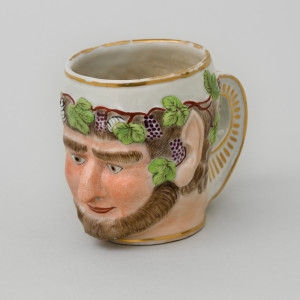AS36
Further images
Modelled after a Derby original as the head of Bacchus, the face delicately enamelled, the skin texture clearly defined in iron red, the eyebrows, beard and hair picked out with lightly etched brown lines, a garland of vine leaves enamelled in green, the veins of the leaves well delineated in grey, the bunches of grapes enamelled in a rich purple, the "C" shaped handle decorated with stylized vine leaves, the sides of the thick handle with gold lappets, the base glazed with a thick unglazed footrim.
Literature
Footnote: This type of mug was copied directly from a Derby original that dates to around 1780-1785 and was created by William Duesbury II (1763-97) when the company was known as William Duesbury & Co. For a similar mug, see Sargent: The Copeland Collection: Chinese & Japanese Ceramic Figures, Peabody Essex Museum, 1991, p 230. See also Howard; The Choice of the Private Trader, page 195, plate 226, and we quote "Modelled accurately after a Derby original in the form of a bearded face …. The Derby originals usually bear a puce mark of c. 1785, and this popular pattern which, with its sailor-like cap, has been called "Sailor's Head", "Rodney" or "Neptune", was made at Chelsea, Derby and other factories - examples of these now being more numerous than the Chinese copies." For a Ralph Wood version of this type, see R.K. Price Ralph Wood Figures, plate XXXVIII no 68. Also see Espirito Santo Collection, Lloyd Hyde/ Silva/ Malta 1956, plate XXXV, p. 94.
For another similar example but with the bearded face of Neptune see Important Chinese Export Porcelain, The Chinese Porcelain Company, 1995, p. 74, pl. 56, and Hodroff Collection, Howard 1994, number 226, p. 195 (Chinese version), Mottahedeh Collection, Howard and Ayers, 1978, Vol II, p. 570, no 591, Essayan Collection, Beurdeley, 1962, p. 44, fig 21 (Chinese version).
The versions known as Neptune are painted with a sawtooth decoration on the rim representing Neptune's crown. Sargent writes in The Copeland Collection: Chinese & Japanese Ceramic Figures, how: "As god of the sea, Neptune became the quintessential motif to represent command over the ocean, thus making him an appropriate figure for a ship captain's mug…The tradition of such mugs can be traced back at least to the first century BCE, when a Roman mug shaped as the head of a god was crafted in Asia Minor. This lead-glazed vessel in terra cotta has the potter's name - Likinnois - incised on the underside. The head shown on that mug wears green leaves in his hair above his forehead [like our mug] and may represent Dionysus, the messenger god Hermes, or the woodland god Pan. The Museum's Neptune mug is also closely related to one in the Copeland Collection at PEM that represents Bacchus and is a descendant of the Likinnois example."






